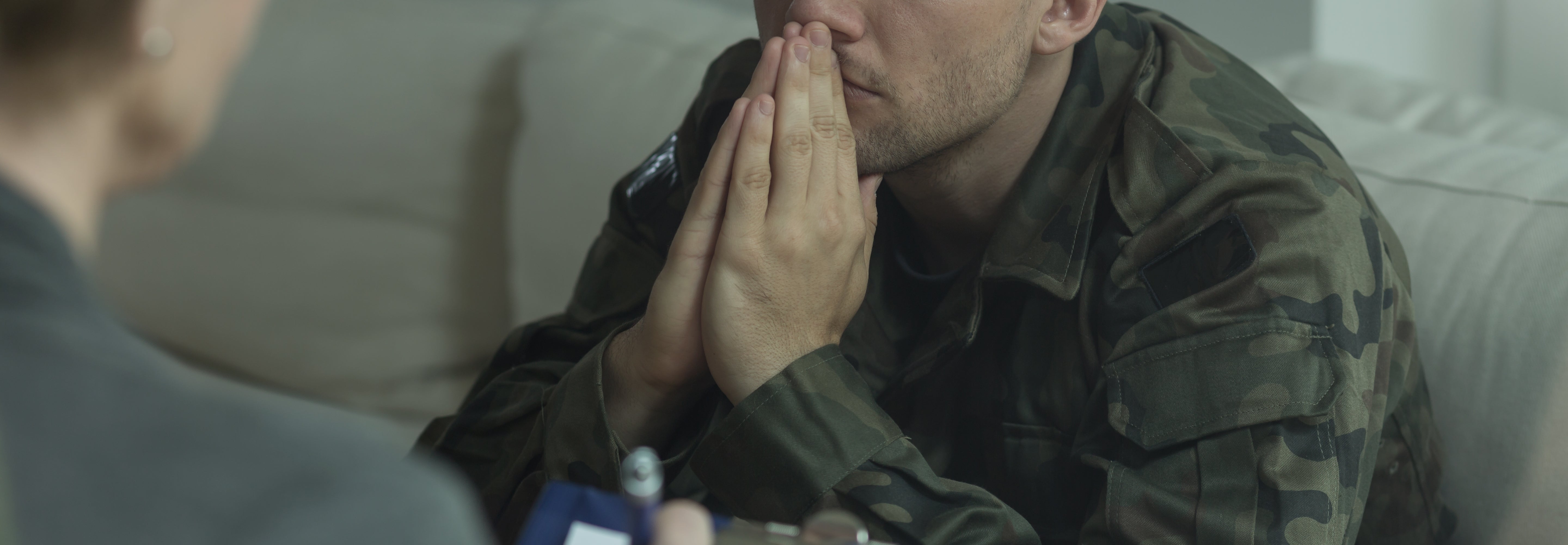Veterans clinic uses eye-movement therapy to address PTSD

The Veterans Health and Trauma Clinic at UCCS offers EMDR treatment
The Veterans Health and Trauma Clinic, which opened in 2014 and is one of five centers and clinics at the CU Colorado Springs HealthCircle, enlists eye movement desensitization and reprocessing (EMDR) therapy to treat veterans, first responders and even some community members with post-traumatic stress disorder (PTSD).
“We have offered EMDR from the very beginning,” said Valerie Anderson, Ph.D., director of the clinic. “Almost every clinician at the clinic is trained and skilled at providing EMDR treatment.”The therapy is designed for a broad range of behavioral health issues – but especially PTSD, she said.
“It was originally developed to treat trauma but has been used for many other kinds of challenges over the years,” Anderson said. “It involves a series of steps designed to reduce the intensity of traumatic memories, and reduce the impact that trauma can have on the ability to function in the world.”
The therapy is composed of eight phases, starting with exploring the client’s history of trauma and coming up with the appropriate treatment.
“The average number of sessions our patients/clients receive is somewhere between 12 and 18,” Anderson said.
During the preparation phase, the patient is given specific coping and relaxation techniques to help her or him rapidly deal with any emotional disturbance that might arise. The needs of the clients and the process to desensitize the individual is measured on the Subjective Units of Distress Scale – or SUDS, according to emdria.org, the official site for training and certification.
Through the therapy, the clinician helps the patient learn to isolate negative images or invasive thoughts and then substitute those with more positive ones. Through eye movements and other sensory techniques -- using their SUDS assessment and guided by the therapist -- a client is desensitized of the traumatic memories and then introduced to positive thoughts and coping mechanisms. Throughout the treatment, the clients report to the clinician what they are feeling and what changes they are experiencing.
“There is no consensus on exactly why EMDR works – or any other psychotherapy, for that matter,” Anderson said. But it does.
EMDR is one of the tools used by the clinic, which was funded in 2013 by a $2 million grant from Lyda Hill to help veterans, their families and others to overcome trauma.
“We primarily use EMDR but there are others that are evidence-based therapies approved by the Department of Defense for the treatment of military trauma,” Anderson said. The therapies used most often include cognitive processing therapy, prolonged exposure, trauma-focused cognitive behavioral therapy, acceptance and commitment therapy, and dialectic behavior therapy.
In the three years since the Veteran’s Health and Trauma Clinic opened, it has served more than 640 people: 80 percent are veterans or have some kind of military connection (such as a family member) and 20 percent are community members, Anderson said.
“The priority is military people with a history of trauma but we obviously see more people than that,” Anderson said. "For example, we have a specialty in co-occuring trauma and eating disorders."
The clinic sees people who have insurance coverage including VA, Tricare, and Medicare, for example. Someone with insurance coverage can be seen by a licensed professional. And for those who don’t, “Someone without insurance coverage could be seen by a student as we are a training clinic for the trauma track of the Psychology Ph.D. program,” she said.
- Colorado
- All Four:





